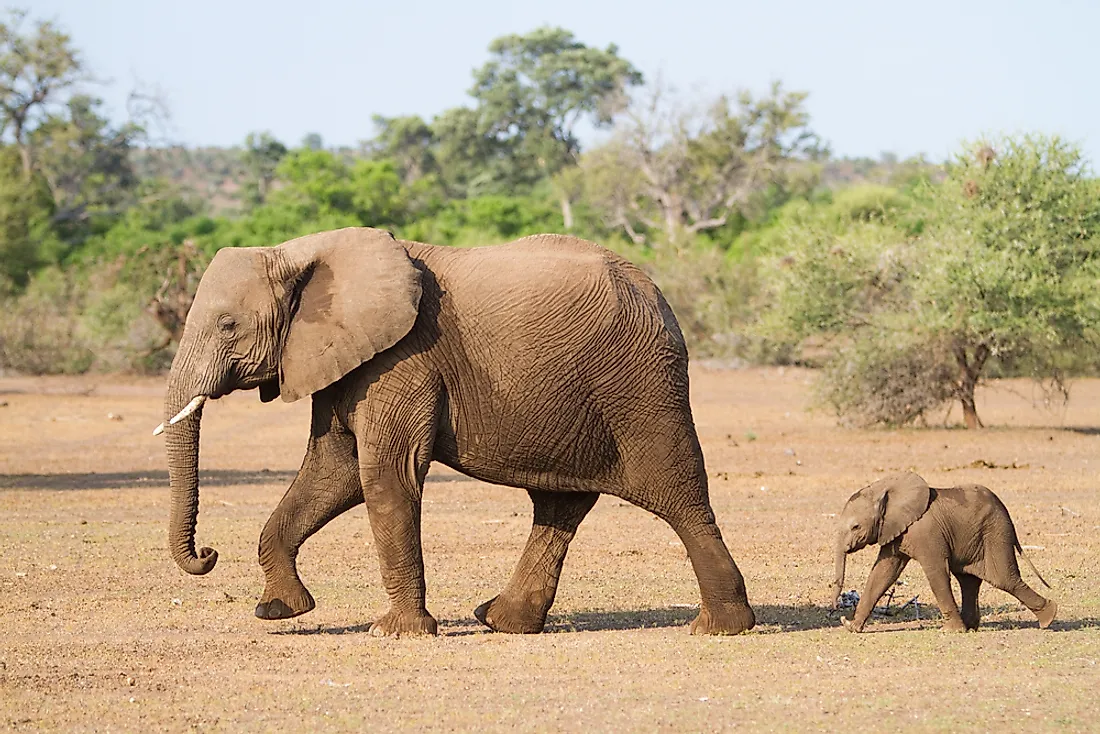What Is A Placental Mammal?

A placental mammal is an animal that has a placenta. Placental mammals carry their fetus in the uterus until they are born at an advanced stage. The young get their nourishment through a placenta before birth. The placenta delivers nutrients and oxygen to the fetus in the uterus. Classified under the subclass Eutheria, placental mammals have 4,000 identified species.
Features
Placental mammals differ from the other mammals anatomically. The mothers can deliver large babies through an adequately wide opening below the pelvis. Non-placental mammals have epipubic bones that extend from the pelvis, which help to stiffen their body during locomotion. These bones are absent in placental mammals as they would hinder the abdomen’s expansion during pregnancy. At the bottom of a placental mammal’s fibula, there is a malleolus, a prominence on both sides of the ankle. The ends of the fibula and tibia have sockets that the foot’s rearmost bones fit, and in turn, form a mortise and tenon joint at the upper part of the ankle.
Subdivisions of Placental Mammals
Placental mammals have three subdivisions; Afrotheria, Xenarthra, and Boreoeutheria, which are divided into smaller divisions. The Afrotheria magnorder has its living members originating from African or living currently in Africa. Some members of this magnorder include elephants, elephant shrews, hyraxes and many others with some being extinct. The magnorder of Xenarthra has extant placental mammals found in the Americas, and include armadillos and modern sloths. This group’s origin traced back to South America around 59 million years ago. The magnorder of Boreoeutheria consists of the Euarchontoglires and Laurasiatheria superorders. Boreoeutheria’s earliest fossils date to about 65 million years ago. The members in this magnorder include moles, hippopotamuses, and seals. Some of the animals in this classification have external testicles for easy cooling.
Evolution of Placental Mammals
About 170 million years ago, Eutheria mammals were small and lived in trees. Their main diet was nocturnal insects. This group led to the rise of the true placental mammals. It is believed that the origin of true placentals was in the late Cretaceous period about 90 million years ago, although irrefutable fossils date to the Paleocene, about 66 million years ago. Modern placental mammals have their ancestry between 66 and 23 million years ago after the extinction that came due to an asteroid impact on Earth. With the absence of the extinct animals, this group of mammals moved into new niches and evolved to increas in size. The placentals went through various adaptations and occupied most of Africa and South America. When the formation of land bridges linked the Americas and Africa to Eurasia, the placental mammals expanded their territories to other continents.
Diet and Body Temperature
Placental mammals have different types of food. Some, like the elephants, are herbivorous and indulge in grazing and browsing. Others are carnivorous, with some specializing in specific prey, while other groups are omnivorous such as bears. There have been numerous studies on placental mammals relating to body size to the quantity of food needed to maintain consistent body temperature. Findings show that metabolic resting rate increases rapidly as the placental mammal’s size decrease.











